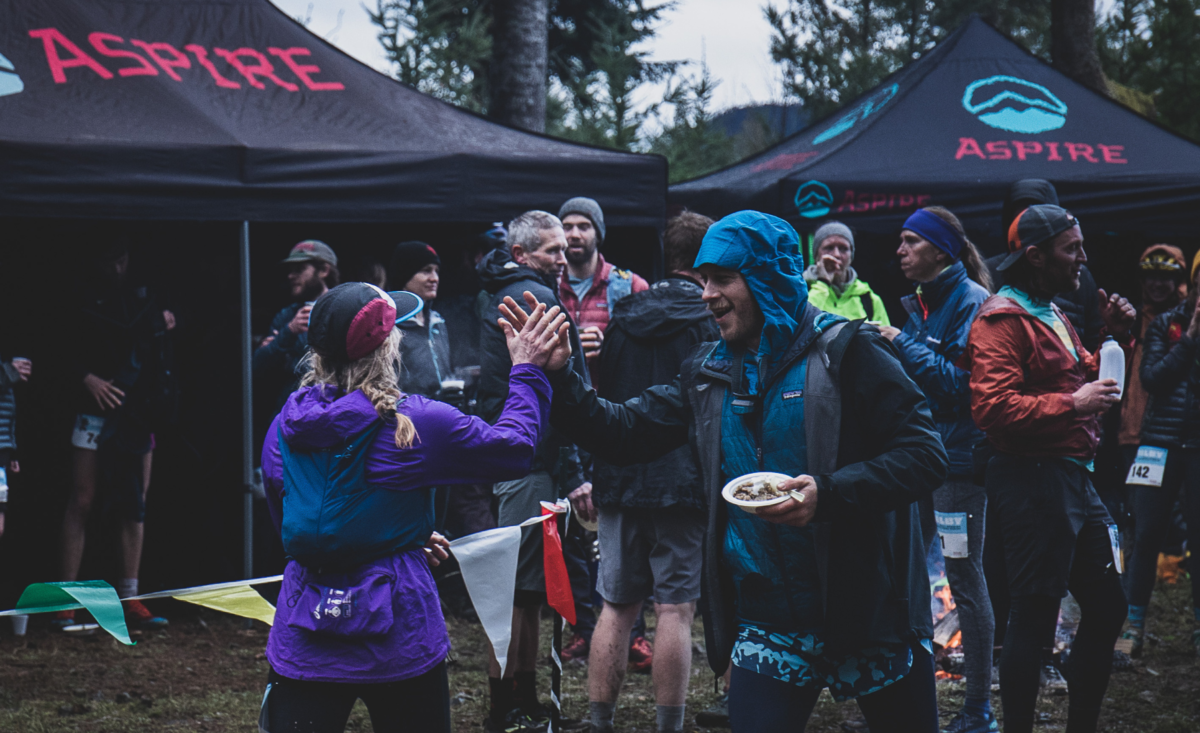While many alpine running destinations are under snow for the months to come, backyard mountains like Marin County’s Mt. Tamalpais, Boulder’s Flatirons, Seattle’s Issaquah Alps and our own Galbraith Mountain here in Bellingham extend the invitation to commit to a deeper relationship with wilderness. We celebrate these places where we can get out year-round and embrace the rain, cold, and the muddy trails as elements of a long term relationship with nature.
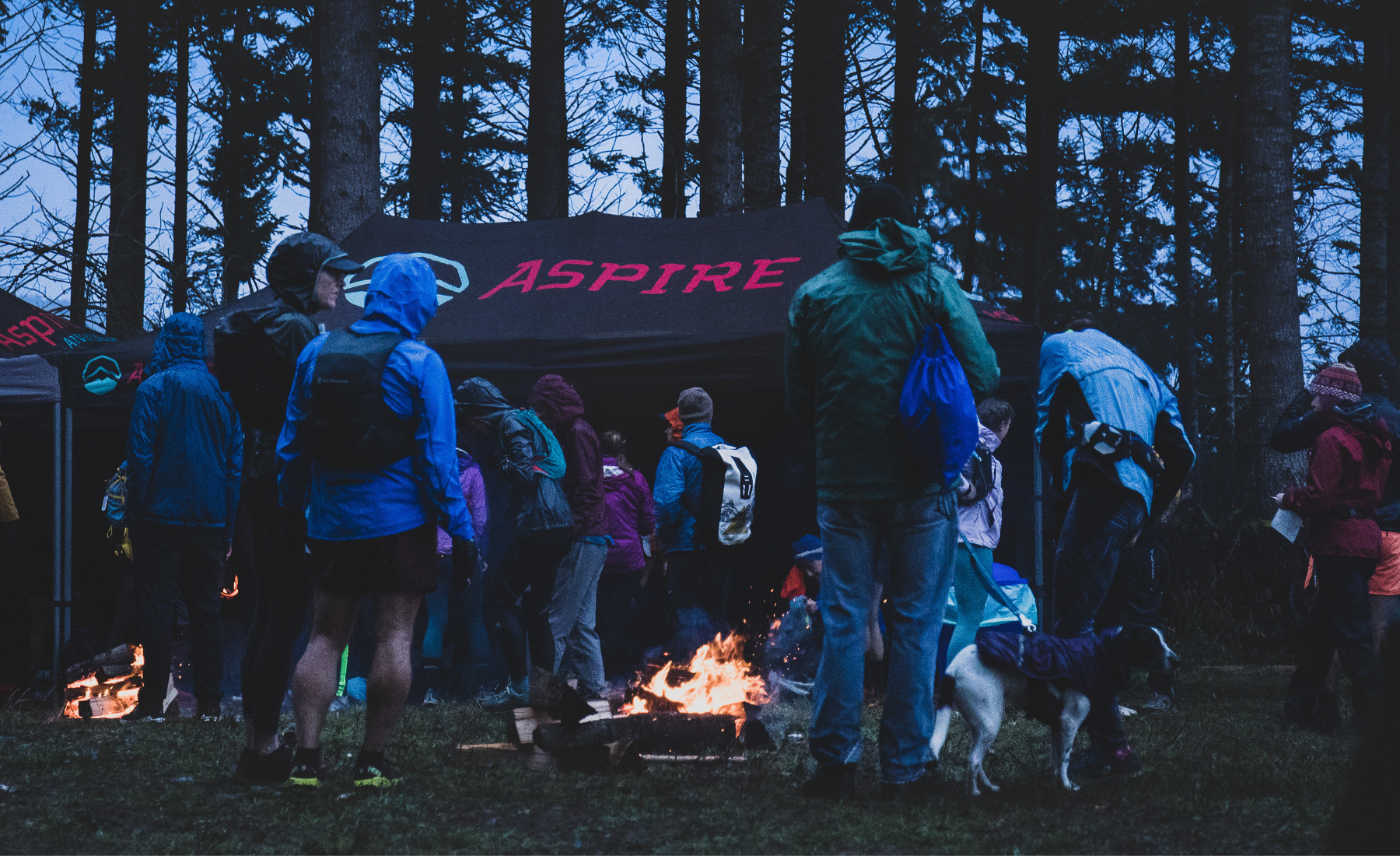
On a recent Saturday rainy morning in a muddy meadow, you could have found 150 runners celebrating with high-fives and hugs, fresh dutch-oven apple crisp and coffee. Wet, smelling like spruce and tilth, they had just run through misty, windy trails hemmed in by yellow cedar and doug fir in the inaugural Galbraith Mt. Community Race, the first in a series of community-oriented winter trail races in Bellingham, Washington hosted by Aspire.
If you live in the greater Bellingham area, chances are that you’re familiar with Galbraith Mountain (the more popular name for North Lookout Mountain), a world-class mountain biking destination that has over sixty-five miles of beautiful trails spread across three thousand acres. Galbraith Mountain-similar to Boulder’s Flatirons or Portland’s Forest Park, is a beautiful example of a local, low-key conservation area that can be accessed close by instead of traveling far.
The beauty of such local gems is that they offer an opportunity for deeper, long-term intimacy with a place: instead of driving-or flying- hours to a more famous “destination” wilderness area, these spaces invite you to settle in and explore your backyard throughout the seasons, learning its moods, the turns of each trail. Over time, you run into people and get to know them. You learn when wildflowers bloom, which areas get more or less muddy, and where the warblers pass through in the spring. You get to know your community, human and biotic. It’s an experience of intimacy. Depth. Place.
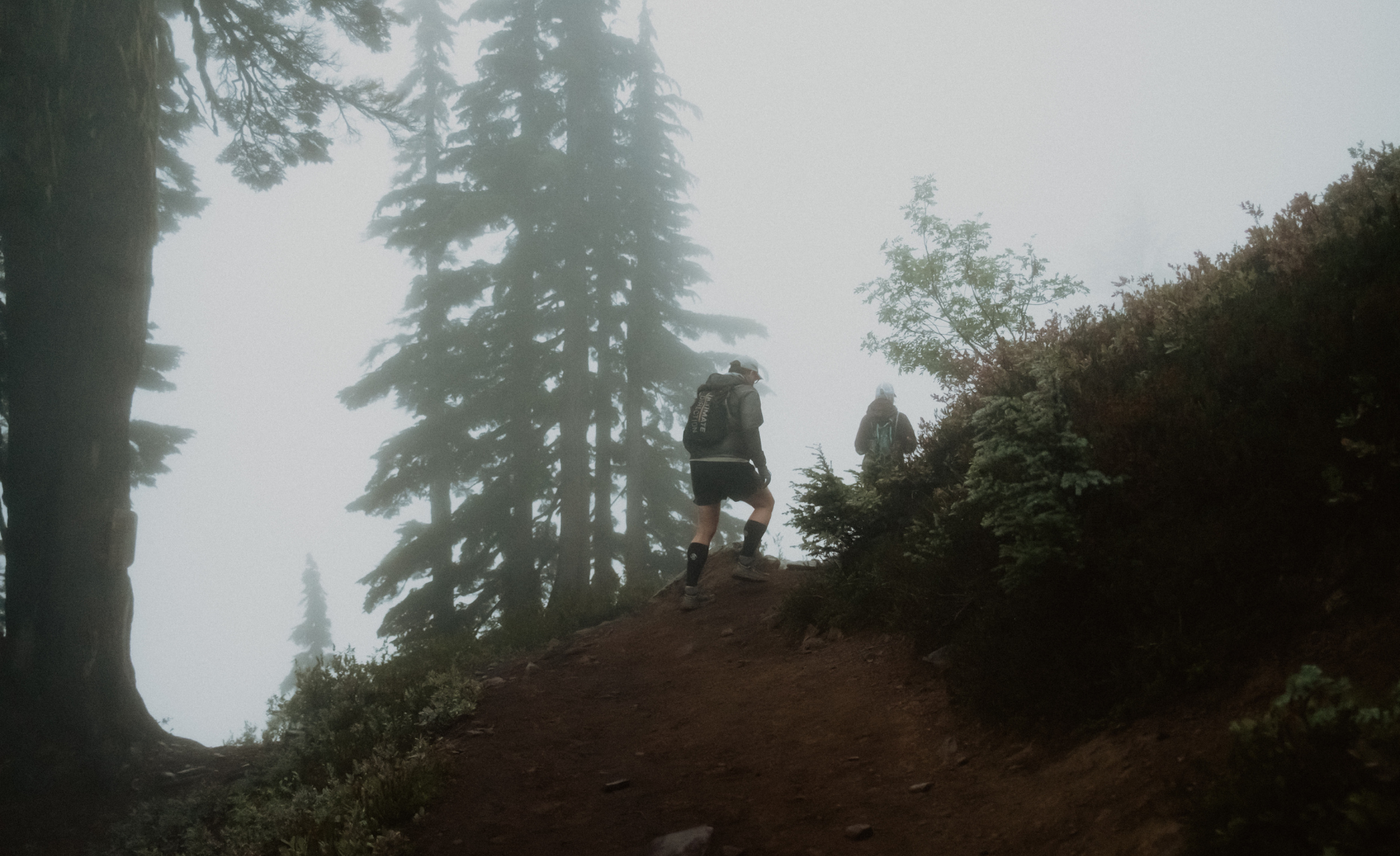
The Galbraith trails, just a few miles outside of downtown Bellingham, are maintained by the Whatcom Mountain Bike Coalition, and provide outdoor opportunities for not only bikes, but also trail runners, hikers, birders and foragers. Galbraith is a great example of community collaboration around conservation and recreation, and its history offers a useful lens onto the ways access to these places is established and maintained, while also holding some storied trail running history.
Galbraith: Origins
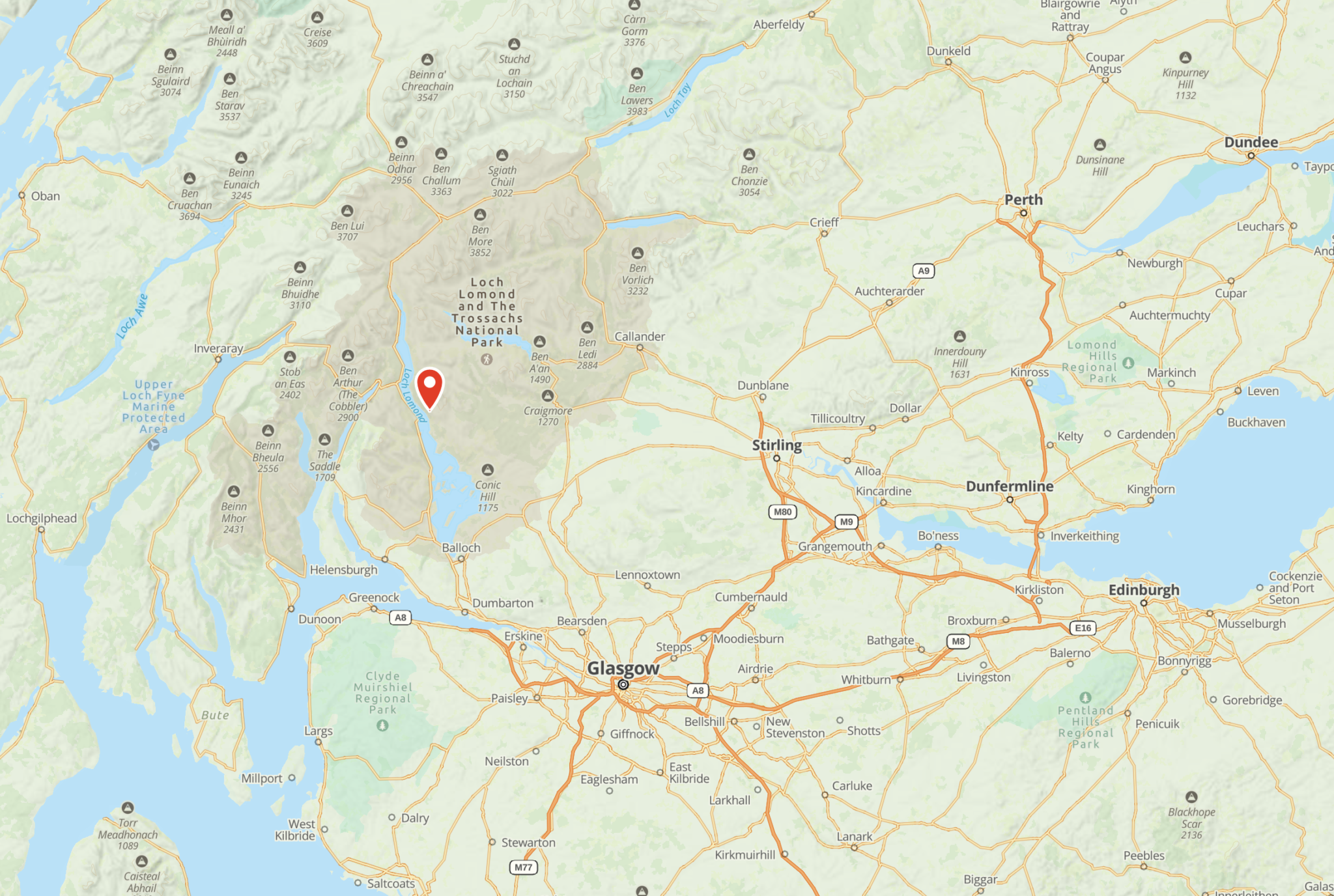
The name Galbraith comes from central Scotland, along the shores of Loch Lomond, which marks the border between the lowlands and the highlands. Scots Gaelic for “Children of Briton” it was the name of a local clan that lived along the western shores of the lake. In the 18th century, the British began the Highland Clearances-driving the clans out of the highlands. A number of the Galbraith’s moved to Colonial America at that time, eventually settling, like many Scotch-Irish, in the Appalachian Mountains. One of the members of that family, Audley Galbraith, was born in 1850 in east Tennessee and, in 1884 moved across the continent to Whatcom County with his wife Henrietta, eventually homesteading 160 acres and raising six children in Acme Township.
Whatcom County, the ancestral land of the Lummi, Nooksack, Samish and Semiahmoo peoples, had been discovered by Spanish explorers in 1775, and in 1792, Captain George Vancouver named Bellingham after a British nobleman. Whatcom County, named for the Lummi name of a local waterfall, had seen a boom in the 1850s, driven by discovery of gold and coal, and by a need for lumber after the San Francisco fire of 1851.
In 1884, Audley Galbraith arrived to a boomtown built on shipbuilding, mining, milling and lumber, as the population had increased from 3,137 in 1870 to 18,591 in 1880. Galbraith was the third Euro-American settler in the Nooksack Valley, which was at that time a remote district of impenetrably dense forest outside of the frontier community of Bellingham. Galbraith spent the rest of his life clearing the forest and developing agriculture while raising six children with his wife. He was also deeply involved in the local community, serving on the local school board and other civic organizations.
To give a sense of how rough frontier life was, in 1911 Audley-who was a Justice of the Peace and Constable- and another man at a local logging camp were involved in a shootout with two men who had stolen boots from the camp. Audley and the other man were both killed, and the two thieves escaped to Sedro-Wooley.
Mount Baker Marathon
In 1911, America’s first mountain trail ultramarathon -The Mount Baker Marathon- was held, with runners taking a train or car up the Mount Baker trailhead, running 28-32 trail miles to the summit of Mount Baker and back before catching a car or train ride back to town. Two of Galbraith’s sons, Joe and Hugh, who were prominent loggers in the area, competed in the event, with Joe winning. Hugh would go on to summit Baker three times, while another brother, Victor would fall into a crevasse during the 1913 marathon before being rescued.
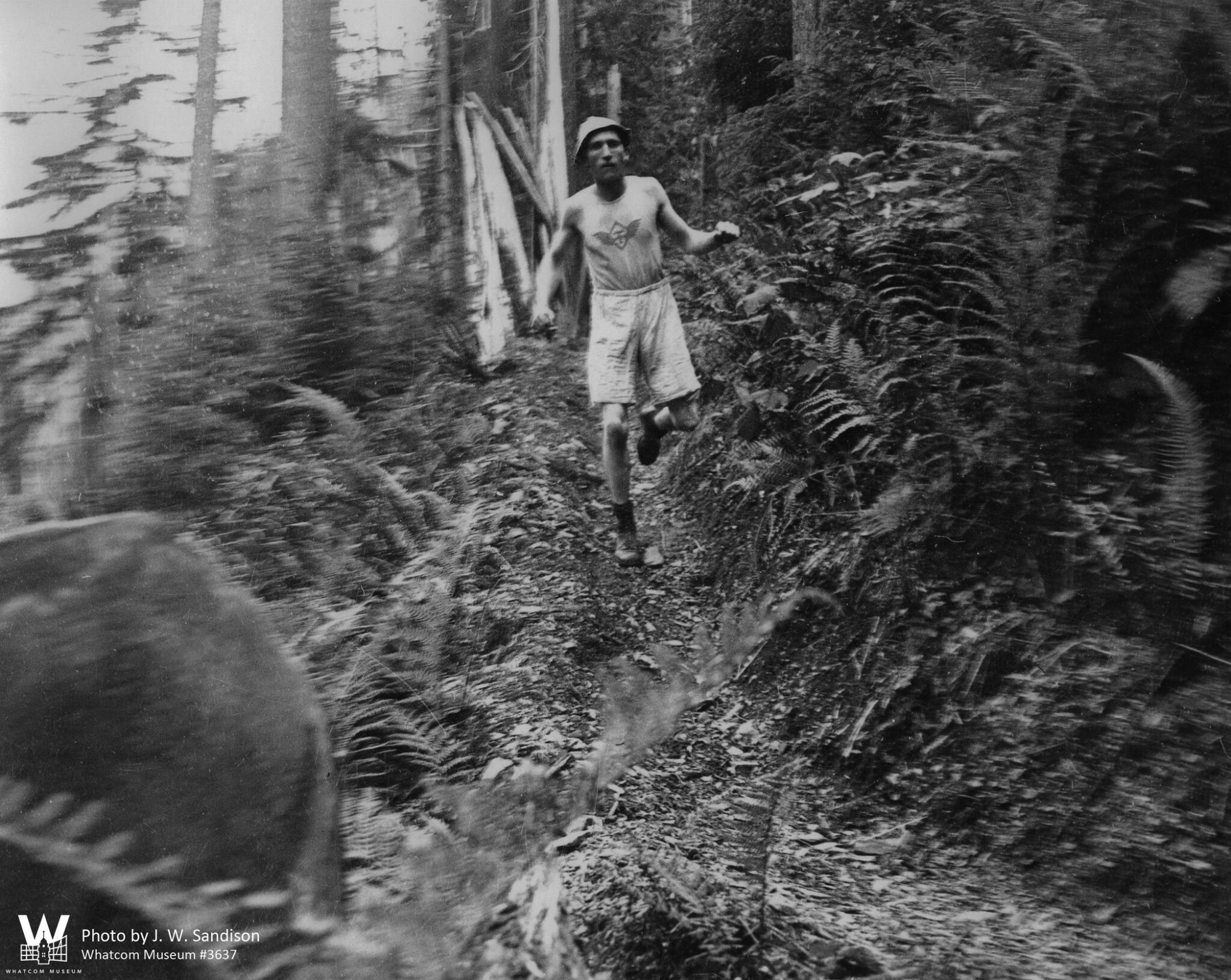
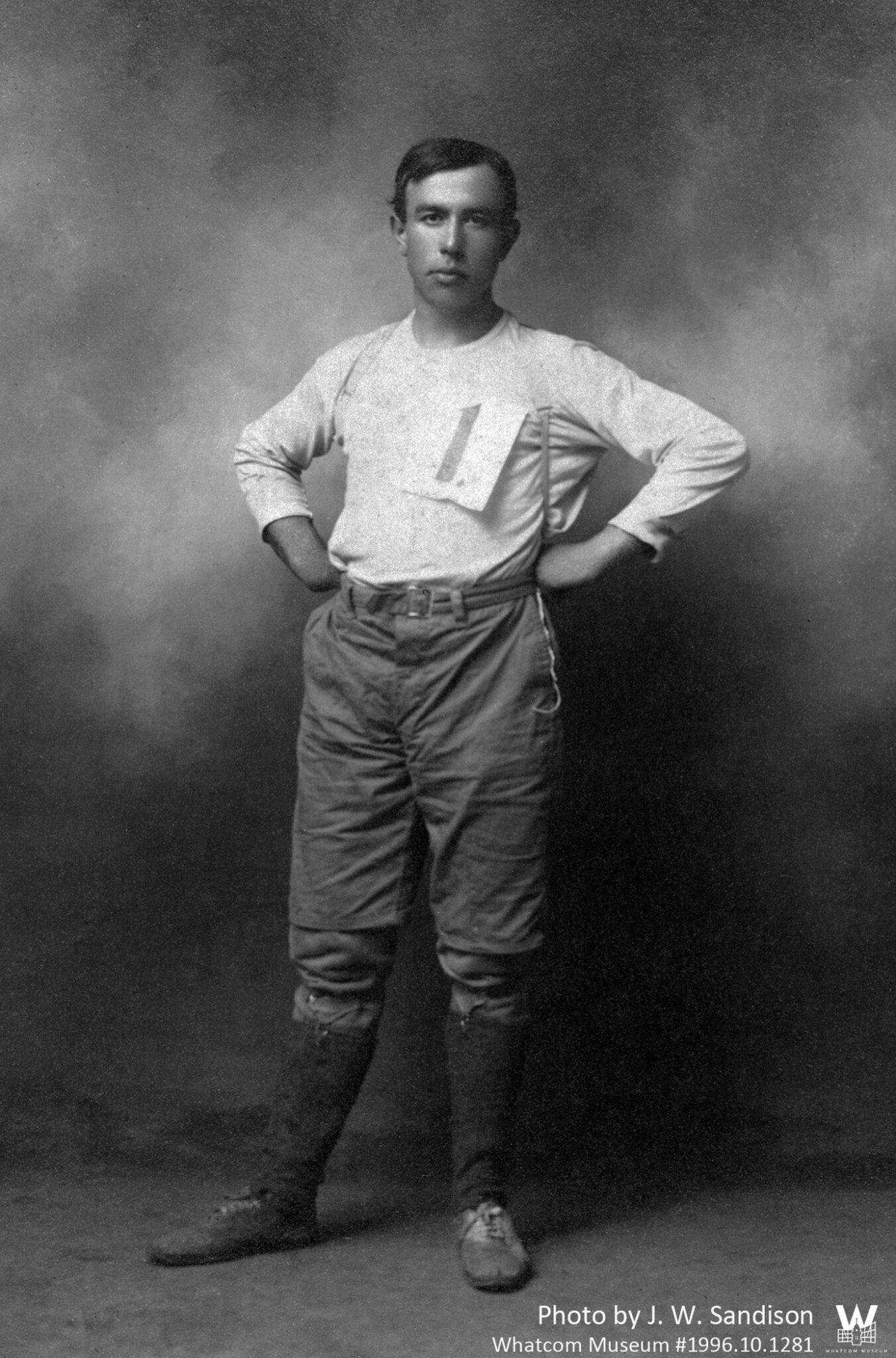
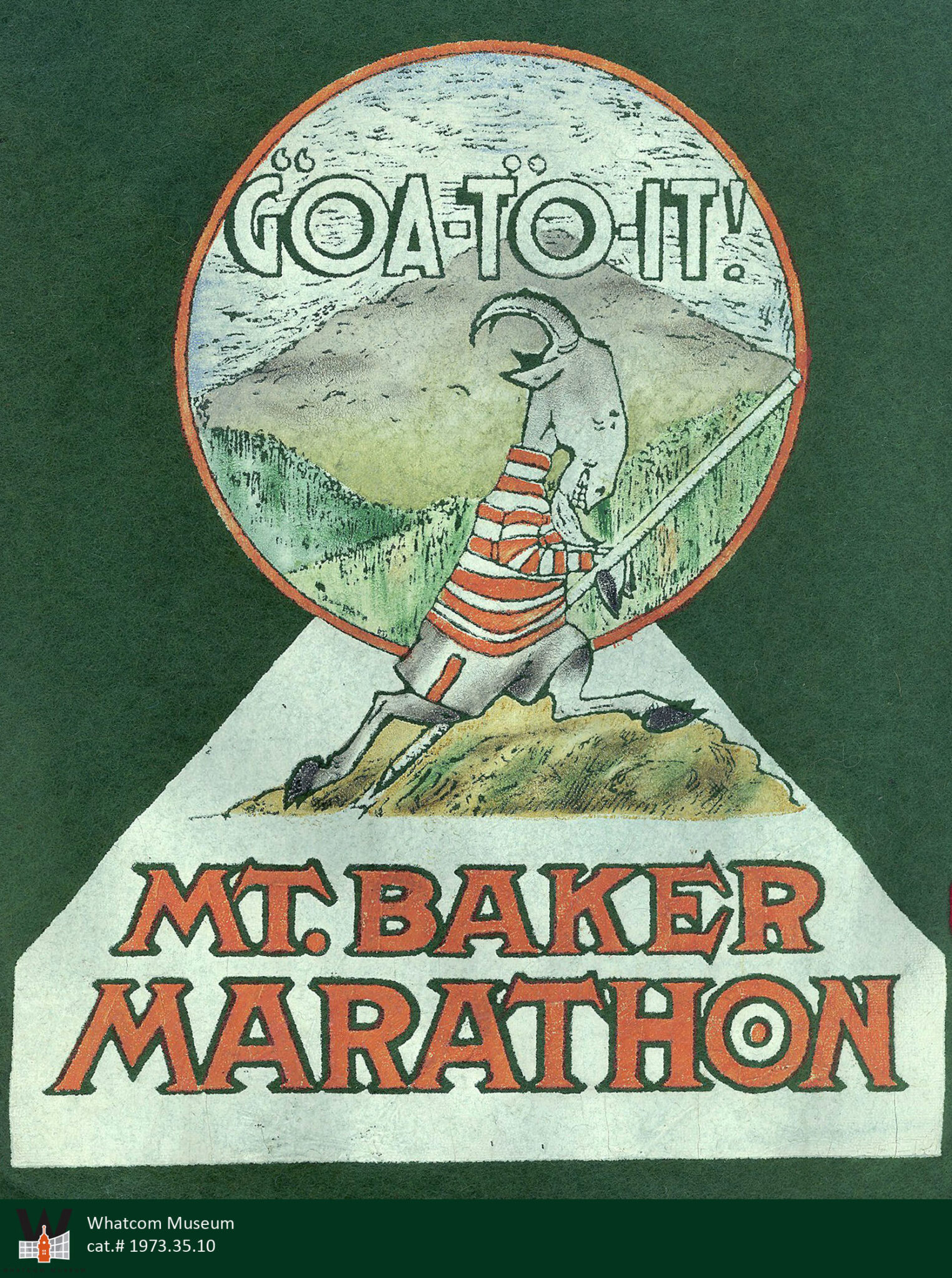
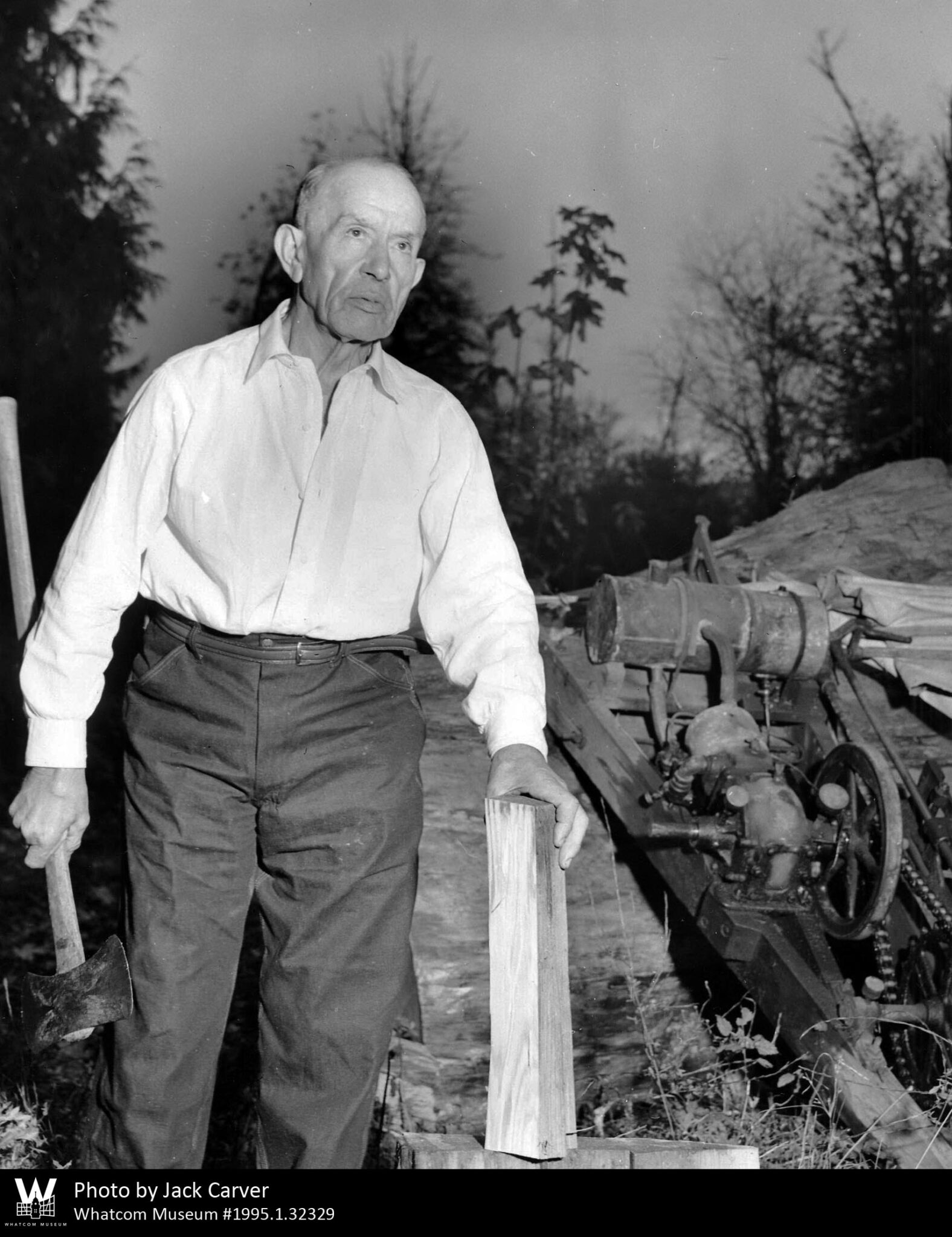
The Galbraiths continued to be a prominent family in the area throughout the twentieth century, with marathon winner Joe continuing to farm and log and hike until his death in 1959. In 2015, Joe Galbraith’s 79-year old daughter and grand-daughter were guided up Mount Baker by a local guide on the path that Joe had taken in 1911. To this day, many descendants of Audley Galbraith live in the greater Bellingham area.
Galbraith Mountain Conservation Collaboration
For decades, Galbraith Mountain was owned and logged by the Trillium Corporation, with the gates to the access roads generally kept open while locals used the area for motorcycling and partying, which eventually led to the gates being closed. With the advent of mountain biking in the 1980s, local cyclists helped organize cleanups of the trails and roads, eventually creating an organization called WHIMPS (Whatcom Independent Mountain Pedalers) that helped to build and maintain trails. In 2002, the Whatcom Mountain Bike Coalition took over maintenance of the trails, and in 2017, Galbraith Tree Farm, LLC purchased the land with the goal of sustainably harvesting timber while preserving recreational access. A year later, in 2018, they entered into an agreement with the city of Bellingham and the Whatcom Land Trust to secure public recreational use of over 50 miles of trail. Today, Galbraith Tree Farm, LLC sustainably harvests timber from a portion of Galbraith Mountain, while the Whatcom Mountain Bike Coalition maintains the trail system for recreational use. Galbraith serves as a model of advocacy, cooperative land management, and community-based outdoor recreation. Youth outreach, mountain bike education programs, bike events have continued to grow, and over 4000 people access the trails each month. Given such a rich history, we’re leaning into a future that holds even more collaboration and shared intention between community stakeholders.
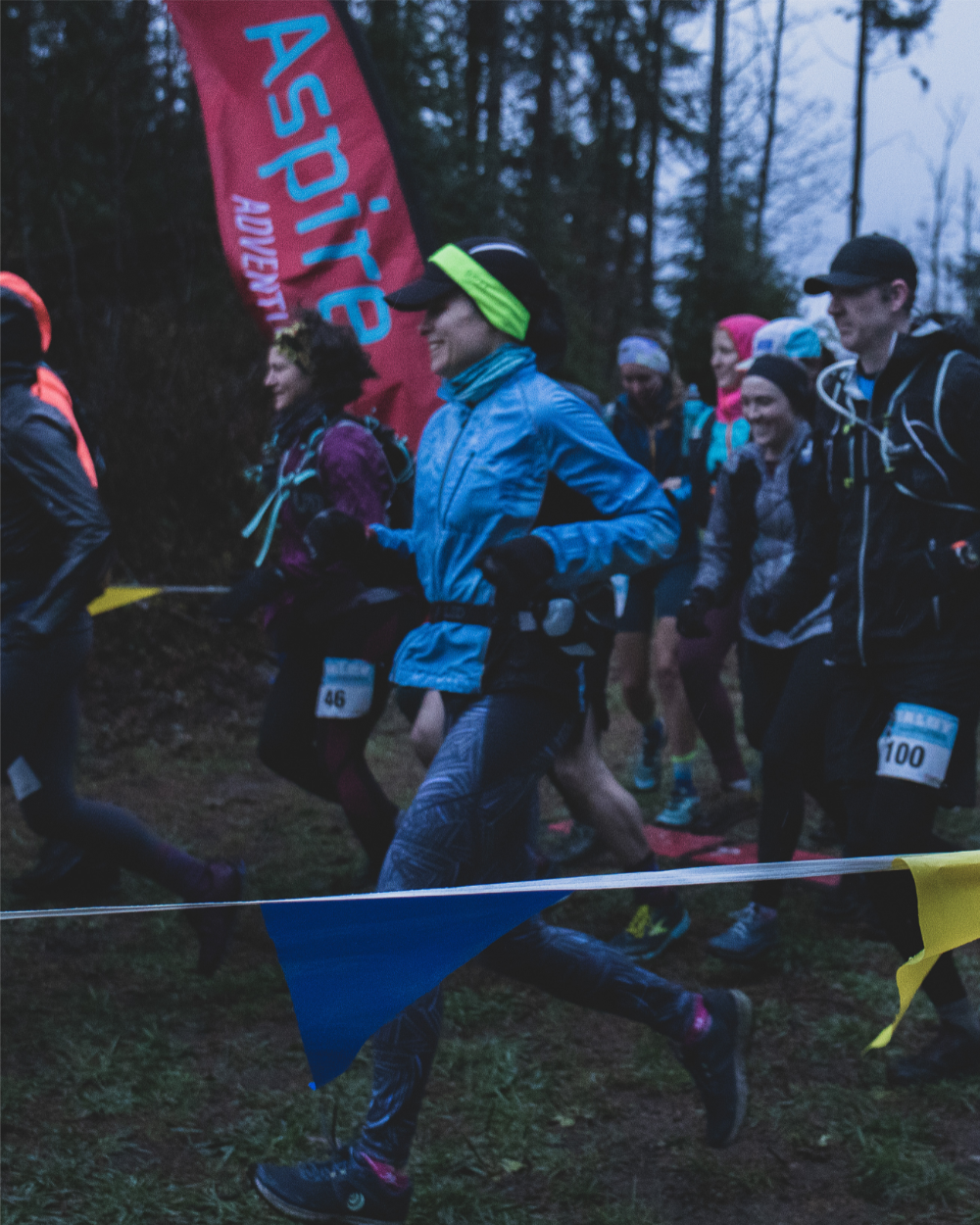
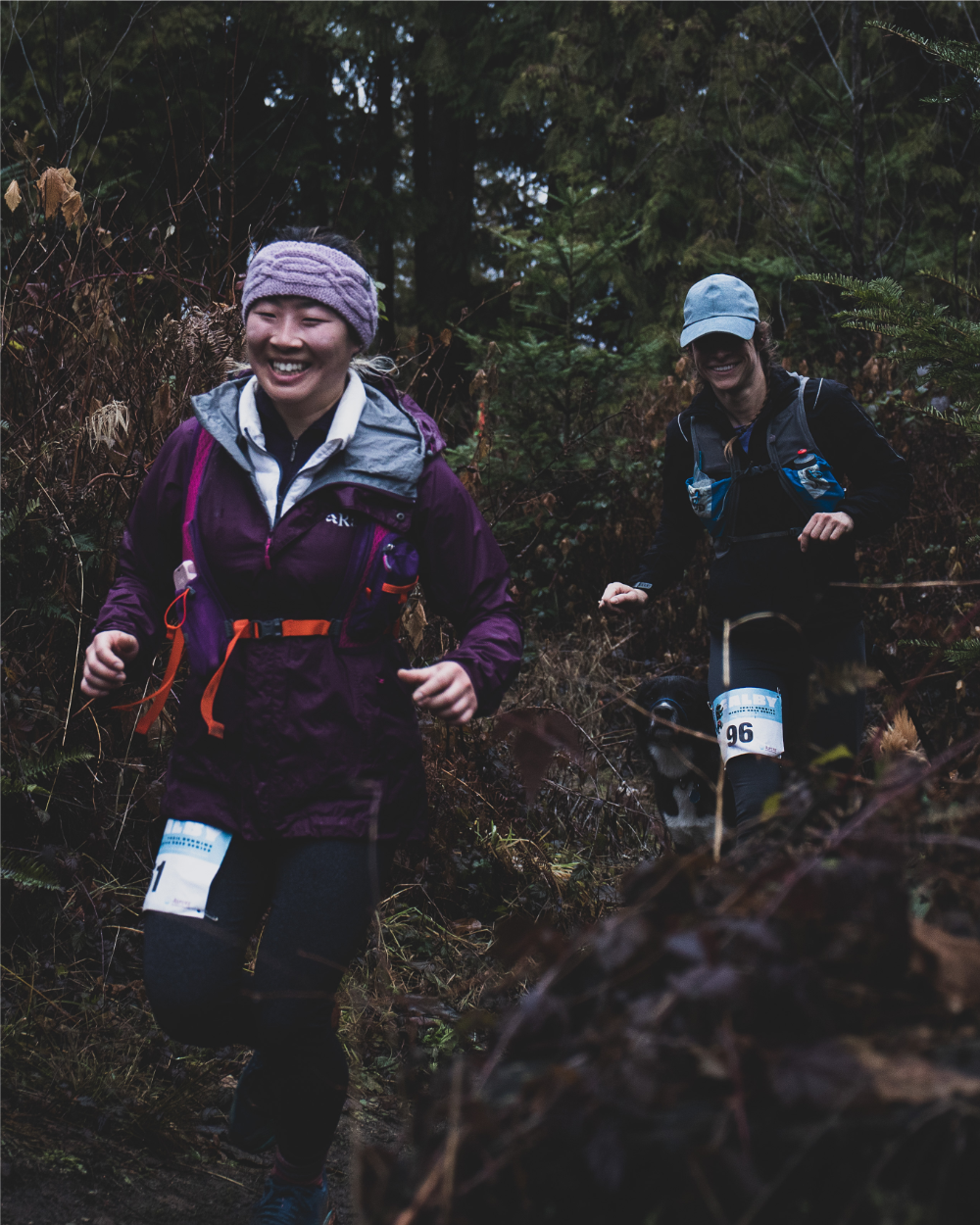
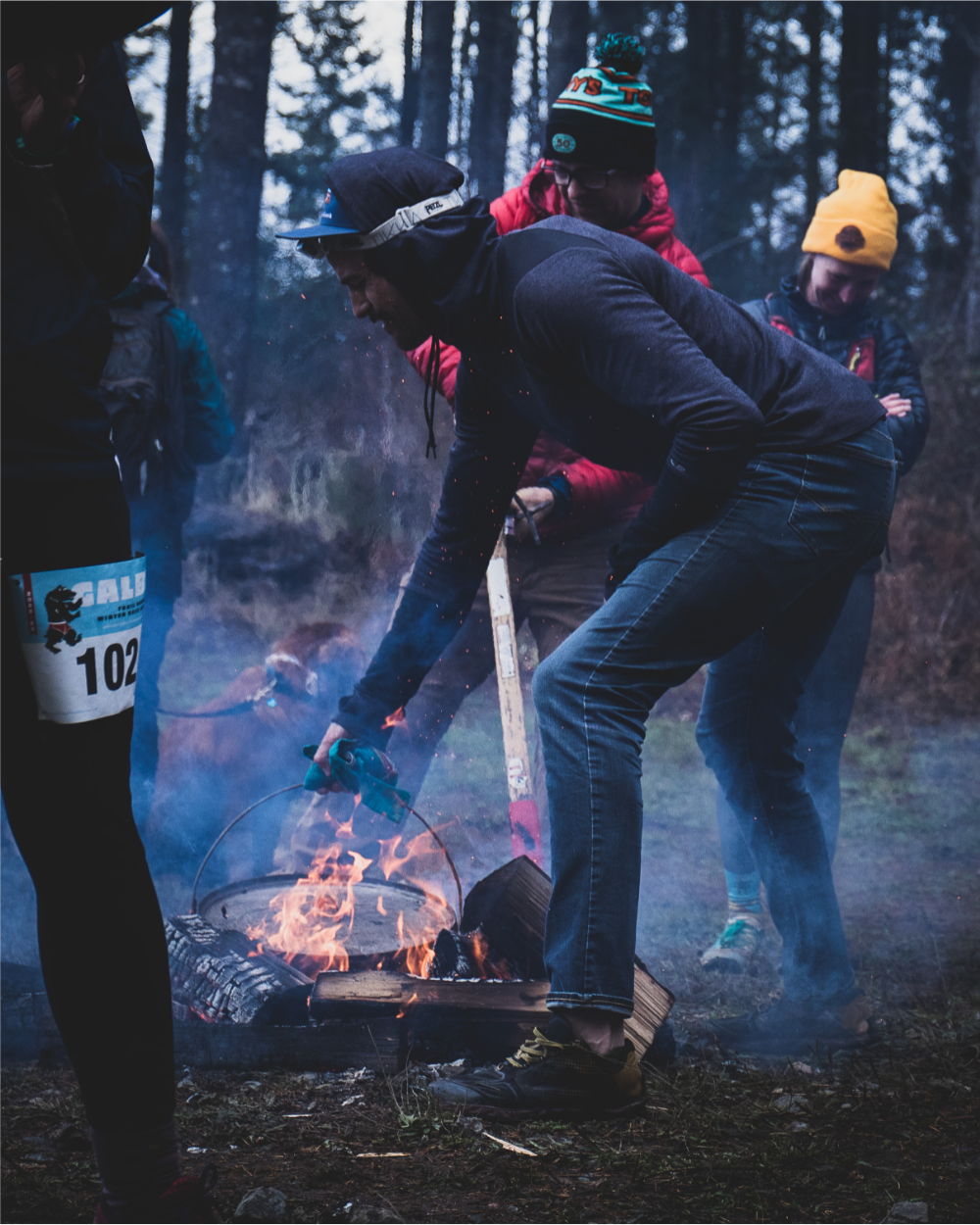
Aspire Adventure Running is honored to be part of the lineage of people and organizations that have contributed to this amazing community resource. Our new Galbraith Winter Race Series is creating opportunities not only for trail running but also for trail work and community gathering. By hosting these events, we seek to invest locally, to give back to the mountain that gives us so much, and to take ongoing responsibility for our community and place.
If you’re around on one of the Saturdays when we’re hosting a race, come on by to run, cheer, or volunteer in the often-damp Cascadian weather. Share a steaming cup of coffee with your neighbors. Get to know the stands of fir and hemlock, the banks and turns of these lovely trails. Smell the tang of skunk cabbage and sap of cedar trees. Listen to the croaks of ravens overhead. Get the feeling of each trail in your body, your mind, your spirit. Dig in. By coming to the mountain, we are coming home.
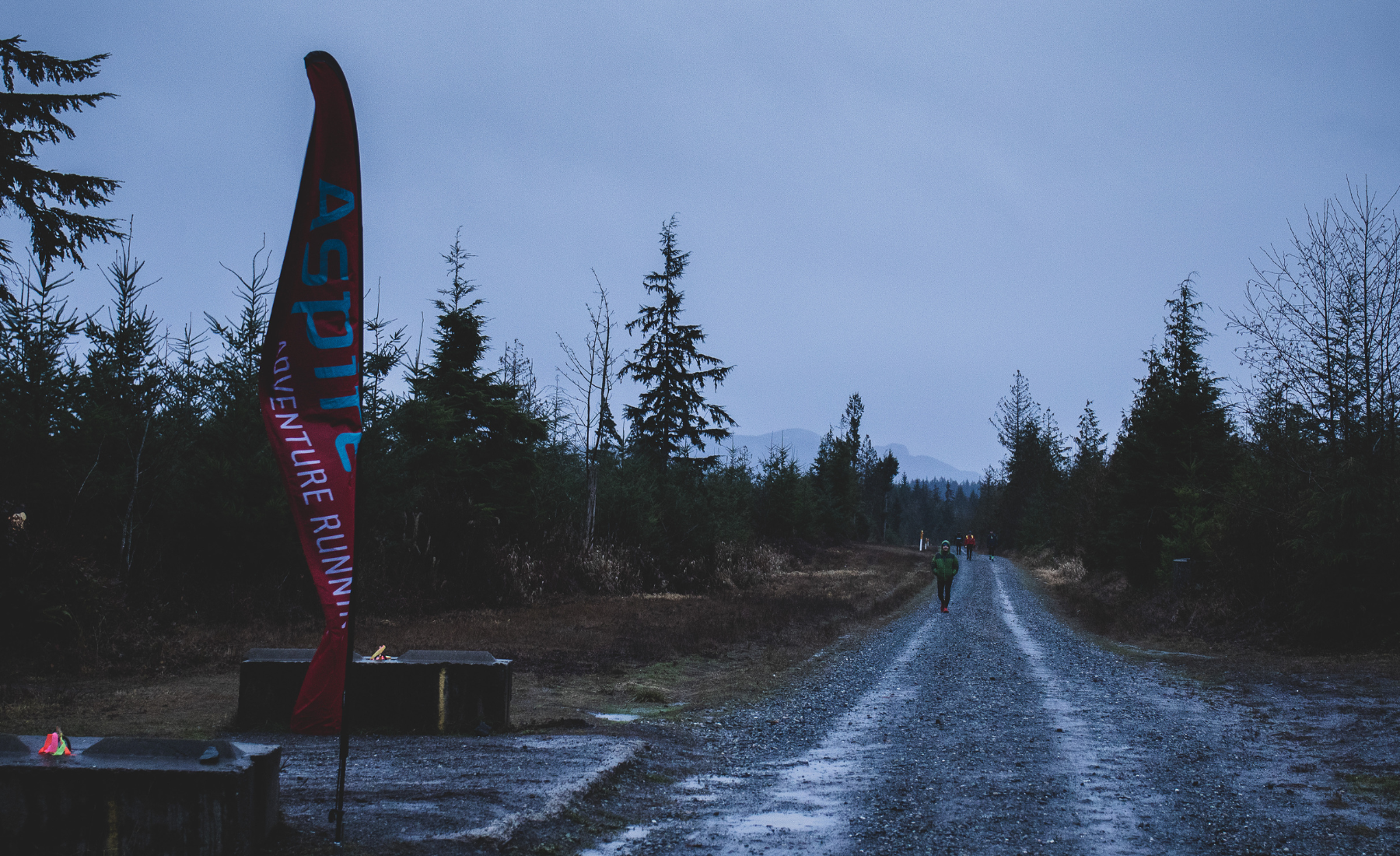
Join us for our Galbraith Mt. Community Race Series second Saturday’s of each month, January – March.

